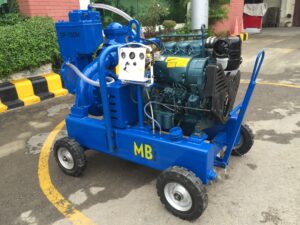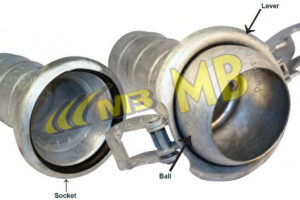The construction dewatering method is used to help assure the safety and success of excavation and construction projects. Within the building sector, this is an essential procedure. The stability of excavation, the avoidance of soil erosion equipment protection, and environmental preservation are just a few advantages of the construction dewatering technique. Further, we are going to discuss regarding dewatering challenges and solutions.
Are you aware? The consequences of using the incorrect dewatering technique for a project or foundation can be expensive in terms of money, time, reputation, and safety. Thus, selecting the appropriate dewatering technique is essential. Dewatering pumps are rented by numerous companies, from which you can choose one.
This blog by WellPoint Dewatering pumps manufacturer exporter in India will discuss various construction dewatering techniques, things to think about when organising construction dewatering, and problems and solutions encountered during the process.
Benefits of Construction Dewatering along with dewatering challenges
The use of construction dewatering has various advantages. You may get these advantages with the dewatering pumps for construction from MB Exports. Other dewatering pump rental options are also offered by MB Exports.
One of the most important advantages of construction dewatering is this. The presence of water may exert hydrostatic pressure on the excavation walls if it is below the groundwater table. This additional pressure causes instability, which can lead to worker injuries, cave-ins, and equipment damage. By lowering the water pressure at the site, dewatering it helps to ensure the stability of the excavation. Moreover, this improves worker safety as a consequence.
Soil erosion is caused by groundwater. Furthermore, this may cause the excavation walls to collapse, which could have disastrous consequences. Reducing the amount of water in the excavation can be achieved by dewatering the site. Less water means less chance of soil erosion and the excavation walls’ structural integrity is maintained.
This is also another advantage of dewatering construction sites. Water can seriously harm construction equipment. Delays, a drop in production, and extra expenses could result from this. In this case, dewatering aids in clearing the area of water. By doing this, you may reduce the possibility of equipment damage and make sure the construction project moves along smoothly.
The process of dewatering is essential for environmental preservation. Because water taken from the excavation sites could contain impurities like chemicals or oil that, if improperly disposed of, could harm the environment. Dewatering aids in the removal of these impurities and keeps them out of the environment. Dewatering reduces the construction project’s negative environmental effects.
Which are the Different Methods of Construction Dewatering?
Contractors can employ a variety of techniques for construction dewatering. Depending on the site’s size, geology, groundwater table depth, and other considerations, contractors choose these techniques and the proper dewatering pumps for construction.
These Construction Dewatering methods include:-
- Well-Point Systems
A well-point dewatering system is among the most often used techniques for dewatering building sites. This technique involves installing wells with tiny diameters all around the excavation site. A header pipe is attached to these tiny wells. After that, a vacuum pump is connected to the header pipe. Further, the task of draining the water from the wells is completed by the vacuum pump. This lowers the water table, allowing the excavation to continue.
- Deep well systems
A submersible dewatering pump is then placed at the bottom of a well that has been dug into the ground. The task of extracting water from the well and releasing it to the surface is completed by the pump. This technique is frequently applied in deep excavations or in situations when the water table is much below the surface.
- Sump Pumping method
The sump pumping approach makes advantage of horizontal drains. They entail putting in perforated pipes underground. So, the sump, to which the pipes are linked, is connected to a pump via additional connections. Then, the water that has been extracted from the sump is released to the surface by the pump. This technique is frequently applied in regions with low groundwater tables.
- Eductor Wells
A well with a high-pressure jet at the bottom is installed using educator wells. Water is drawn into the well by the vacuum created by the jet at the bottom. After then, the well’s water is released to the surface. In regions with porous soil and a shallow groundwater table, educator wells are frequently utilised.
Factors to Consider in Construction Dewatering
Planning for construction dewatering requires taking a number of things into account. The geology of the location, the cost, the point of discharge, the duration, the local laws, etc. Thus, the dewatering process’ efficacy and efficiency may be impacted by several variables.
Dewatering Challenges Faced and Their Solutions in Construction
Dewatering a construction site can be difficult at times. There are a few dewatering challenges that contractors could run against when dewatering. We’ll outline some typical problems here along with their fixes:-
- Blockage of Dewatering Tools
- Dewatering machinery might clog as a result of the constant impact of sand or debris. As a result, it is less effective. Clogging can be avoided with routine cleaning and equipment maintenance. This guarantees the machinery is operating effectively.Not Enough Dewatering
- Inadequate dewatering may result from improperly constructed or planned dewatering systems. Contractors are in charge of making sure the equipment is placed appropriately and that the dewatering system is built to manage the anticipated groundwater flow.
Dewatering construction sites can have negative environmental effects, such as groundwater contamination or depletion. Such environmental effects should be carefully considered by contractors, and mitigation measures should be implemented. Therefore, by employing ecologically friendly dewatering techniques and appropriately disposing of the water, these dewatering challenges can be reduced.
Conclusion
MB Exports can provide assistance in construction dewatering. Moreover, we provide a variety of dewatering pumps and systems designed for various applications, including construction dewatering. Our pumps are efficient and durable. Thus they are an ideal choice for construction sites.
MB Exports offers help to contractors to determine the most appropriate dewatering method for their projects. We, at Perennial, have established ourselves as a trusted and reliable partner for construction dewatering.
Thus, to conclude we can say that construction dewatering is an essential process that requires careful planning and execution. Contractors should seek the help of experts to ensure that their construction projects proceed efficiently, safely, and within local regulations. But, with our support and guidance contractors can be confident that their construction projects will proceed without any unplanned or accidental issues. For more information consult the top rated dewatering pump manufacturers & suppliers in India
Read more about A Complete Guide to Wellpoint Dewatering Understanding




